Training
Martial Arts Studies Academic Journal Whilst registered individuals and groups are invited to send academic papers and information relating to martial arts practice for inclusion in this section, the Martial Arts University Grant Commission (MAUGC) is not responsible for the accuracy of content.

Samurai
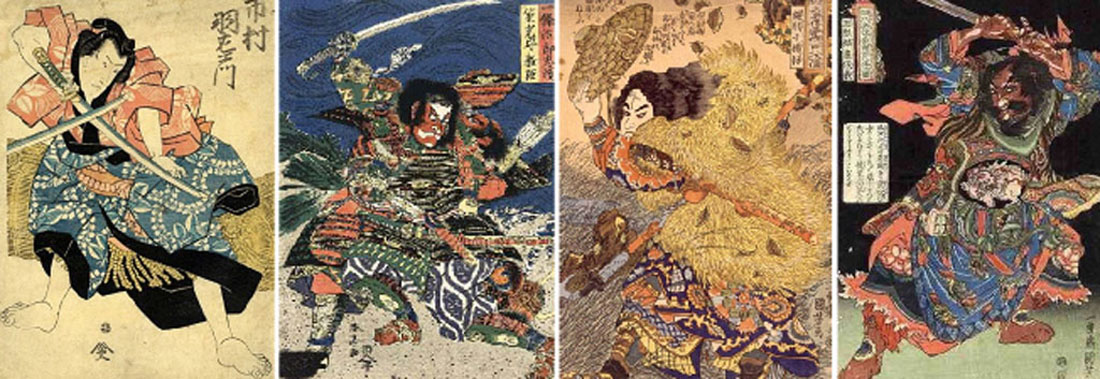
Samurai, usually referred to in Japanese as bushi, were the military nobility of medieval and early-modern Japan. In Chinese, the character for the word was originally a verb meaning to wait upon or accompany persons in the upper ranks of society, and this is also true of the original term saburau in Japanese. In both countries the terms were nominalized to mean those who serve in close attendance to the nobility. An early reference to the word ‘samurai’ appears in the Kokin Wakashu (905-914 CE), the first imperial anthology of poems, completed in the first part of the 10thcentury. By the end of the 12thcentury, samurai became almost entirely synonymous with bushi, and the word was closely associated with the middle and upper echelons of the warrior class. The samurai followed a set of rules that came to be known as bushido, and whilst the samurai numbered less than 10% of Japan’s population, their teachings can still be found today in both everyday life and in modern Japanese martial arts.
Shaolin

Shaolin kung fu, also called Shaolin wushu or Shaolin quan, is believed to be the oldest institutionalized style of kung fu. It is one of the most famous martial arts, it originated and was developed in the Buddhist Shaolin Temple in the Henan province of China, and over 1500 years became one of the largest schools. Numerous other styles were created, inspired, or based on the Shaolin system that contains various bare-handed and weapon systems, as well as routines for health. Apart from the core style of the Shaolin temple, the name Shaolin is used as a brand for the so-called external styles of kung fu, and there are many outside the Shaolin temple, mainly in southern and northern China that use, rightly or wrongly, the name Shaolin.
Ju-Jitsu
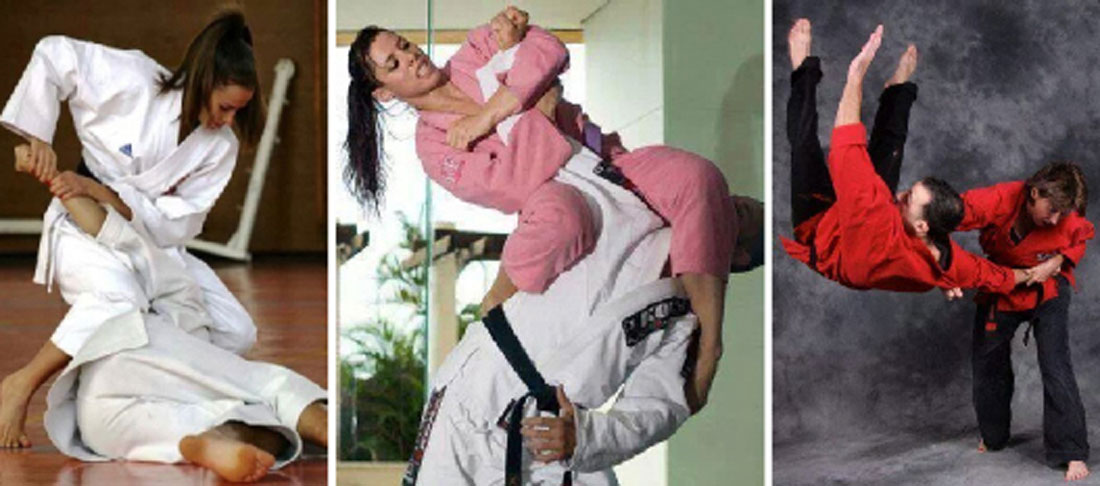
Ju-jitsu or jiu-jitsu refers to the Japanese art of ju-jutsu. The word ‘Ju’ can be translated to mean gentle, soft, supple, flexible, pliable, or yielding, and the word ‘jutsu’ can mean art or technique. Ju-jutsu developed among the samurai of feudal Japan as a method for defeating an armed and armored opponent in which one uses no weapon, or only a short weapon. As striking against an armored opponent proved ineffective, practitioners learned that the most efficient methods for neutralizing an enemy involved joint locks, and throws, and these techniques were developed around the principle of using the attackers’ energy against themselves rather than directly opposing it. There are many variations of the art, which leads to a diversity of approaches, and ju-jutsu schools utilize all forms of grappling techniques that include throws, trapping, joint locks, holds, gouging, biting, disengagements, striking, and kicking, in addition to the use of weapons. Today, the art is practiced in both traditional and modern sport forms that include judo, which derived from several forms of ju-jutsu, and Brazilian jiu-jitsu that in turn originated from earlier versions of Kodokan judo.
Kung-Fu

Kung fu or gongfu are Chinese terms referring to any study, learning, or practice that requires patience, energy, and time to complete, but are often used to refer to Chinese martial arts, and it was not until the late twentieth century this term was used in relation to Chinese martial arts by the Chinese community. The original meaning of kung fu refers to any skill achieved through hard work and practice, and not necessarily involving the martial arts. Gōngfu is a compound of two words, combining gōng’ meaning work, achievement, or merit, and ‘fū, a word for man or a particle or nominal suffix with diverse meanings. A first literal interpretation would be achievement of man, whilst the second is often described as work and time or effort. It is an accomplishment arrived at by great effort of time and energy, and the word gongfu is sometimes applied to more general, non-martial arts usages. Originally, to practice kung fu involved the process of training, strengthening of the body and the mind, and the learning and perfection of skills. It referred to excellence achieved through long practice in any endeavor, and this meaning can be traced to classical writings, especially those of Neo-Confucianism, which emphasize the importance of effort in education. The term kung fu implies skill in any area where hard work is needed for its development, and bad kung fu refers to the absence of commitment in time and effort, or the lack of motivation. Today, there are hundreds of diverse styles of martial arts claiming to be kung fu.
Sumo

Sumo, is a competitive full-contact wrestling sport where attempts are made to force an opponent out of a circular ring, or to touch the ground with anything other than the soles of the feet. The sport originated in Japan, the only country where it is practiced professionally, and generally considered to be a modern Japanese martial art, though this definition is misleading as the sport has a history spanning many centuries. Many ancient traditions have been preserved in sumo, and even today the sport includes many ritual elements, such as the use of salt purification, from the days when sumo was used in the Shinto religion. The lives of its practitioners are highly regimented, with rules laid down by the Sumo Association, and most sumo wrestlers are required to live in communal sumo training stables, known in Japanese as heya, where all aspects of their daily lives, from meals to their manner of dress, are dictated by strict tradition.
Kyudo

Kyudo, is the Japanese martial art of archery that originated with the samurai class of feudal Japan, and now practised worldwide in many different schools, some of which descend from the military, and others from ceremonial or contemplative practice, therefore the emphasis is differen as some emphasise aesthetics and others efficiency. Contemplative schools teach the form as a meditation where in certain schools shooting correctly results inevitably in hitting the desired target. The supreme goal is the state of ‘shin-zen-bi’, roughly translated as truth, goodness, and beauty, which requires archers to shoot correctly or truthfully with virtuous spirit and attitude towards all persons and things. Kyudo includes the idea of moral and spiritual development, and today many archers practise it as a sport with marksmanship being paramount. However, the goal most devotees seek is ‘seisha seichu, which translates as correct shooting is correct hitting. The unique action of expansion that results in a natural release is sought through the technique of shooting correctly so the arrow hits the target. The shooting is the spiritual goal achieved by perfection of both the spirit and shooting technique leading to munen musō’, no thoughts – no illusions. Since the Second World War kyudo has often been associated with Zen Buddhism but not all kyudo schools include a religious or spiritual component, and many practitioners believe competition, examination, and any opportunity that places the archer in an uncompromising situation is important, whilst others avoid competitions or examinations of any kind.
Judo
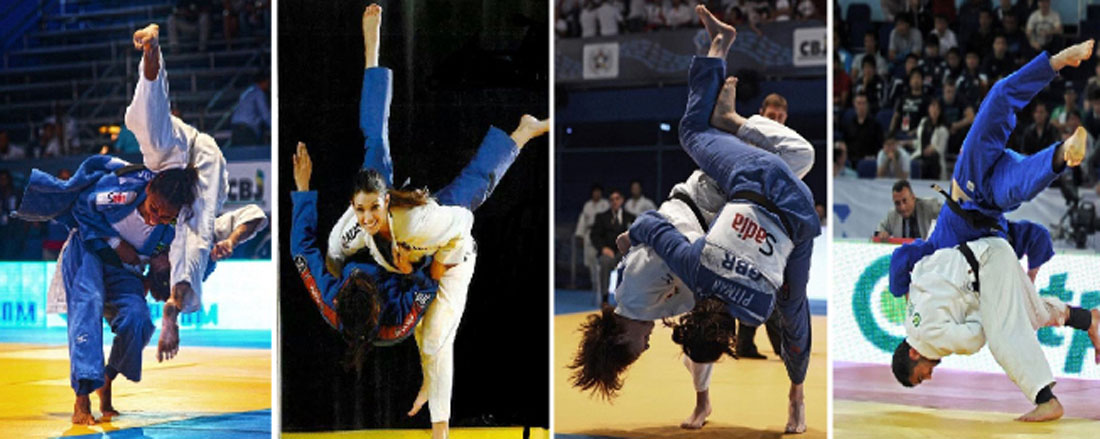
Judo, is a modern martial art and combat sport created in Japan in 1882 by Jigoro Kano. Its most prominent feature is a competitive element, where the objective is to either throw or takedown an opponent to the ground, immobilize or otherwise subdue with a pin, or force an opponent to submit with a joint lock or choke hold. Strikes and thrusts by hands and feet, as well as weapon defences are included, but only in pre-arranged forms, and are not allowed in competition or free practice. The philosophy and subsequent pedagogy developed for judo became the model for other modern Japanese martial arts that evolved from traditional schools, and the worldwide spread of judo led to the development of a number of offshoots such as sambo and Brazilian jiu-jitsu.
Kendo
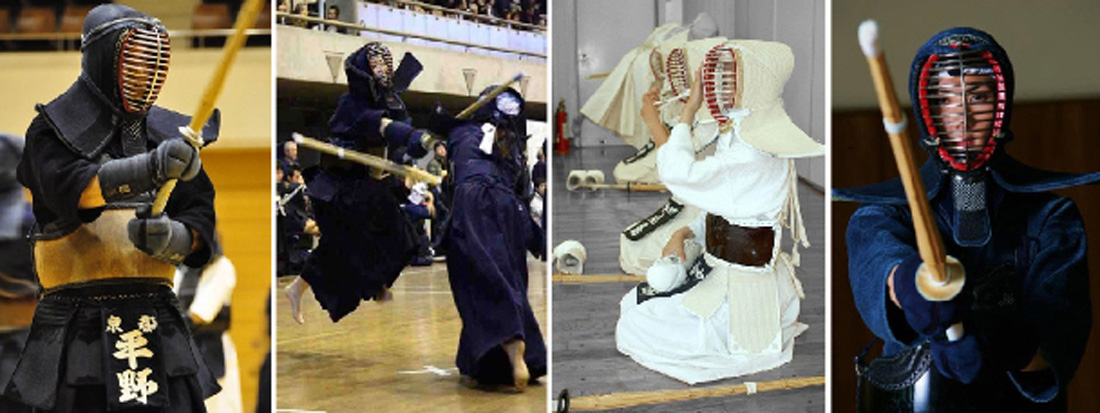
Kendo is a modern Japanese sport martial art descended from swordsmen in Japan that established schools of kenjutsu, the ancestor of kendo, which continued for centuries and formed the basis of kendo practice today. The formal kendo exercises known as kata were developed several centuries ago as kenjutsu practice for warriors, and they are still studied today, in a modified form. The introduction of bamboo practice swords and protective armour to training methods is attributed to Naganuma Shirōzaemon Kunisato during the Shotoku Era (1711-1715 CE). Today, kendo is widely practiced within Japan and many other nations across the world, and it is a physically and mentally challenging activity that combines martial arts practices and values with sport and strenuous physical activity.
Karate

Karate developed from the indigenous martial arts of the Japanese Ryukyu Islands, in what is now Okinawa, under the influence of Chinese martial arts, and in particular the Fujian White Crane system. It was brought to the Japanese mainland in the early 20th century during a time of cultural exchanges between the Japanese and Chinese, and systematically taught in Japan after the Taisho era. In 1922 the Japanese Ministry of Education invited Gichin Funakoshi to Tokyo to give a karate demonstration, in 1924 Keio University established the first university karate club in Japan, and by 1932 most major Japanese universities had karate clubs. In this era of escalating Japanese militarism, the name was changed from Chinese hand’ to ‘empty hand’ and indicated the wish to develop the combat form in Japanese style. It is a striking art using punching, kicking, knee and elbow strikes, and open hand techniques, and in some styles, grappling, throws, joint locks, restraints, and strikes to vital points are taught. After World War II, Okinawa became an important United States military base, karate became popular with service personnel stationed there, and subsequently schools began appearing across the world, catering to those with casual interest as well as those seeking a deeper study of the art.
Tameshiwari

Tameshiwari is a martial arts technique used in competitions, demonstrations and tests that involves breaking one or more wooden objects, bricks, glass, or ice and cinder blocks by striking surfaces with the hands, feet, head, toes, fingertips, elbows, knuckles or knees. However, not all styles of karate practice this and many traditional karate schools place, little emphasis on it.
Kobudo

Kobudo usually relates to the weapon systems of Okinawan martial arts that include the bo, sai, tonfa, kama, nunchaku, tekko, tinbe-rochin, surujin, tambo, jo, hanbo and eku. It is common belief Okinawan farming tools evolved into weapons due to restrictions placed upon the peasants by the Satsuma samurai clan when the island became part of Japan and forbade the carrying of arms. Whilst it has been climed this resulted in fighting systems based on the use of traditional farming implements, scholars have been unable to find historical evidence to support this, and that uncovered by various martial historians suggests the Pechin Warrior caste in Okinawa used such weapons, and not commoners. Although it is true Okinawans under the rule of foreign powers were prohibited from carrying weapons or practicing with them in public, the weapons-based fighting they secretly practiced, and the types of weapons they used, had strong Chinese roots. Although examples of similar weapons have been found in China, Malaysia, and Indonesia that pre-date Okinawan adaptations, modern kobudo systems were shaped by indigenous Okinawan techniques. These arose within the noble class, and through imported methods from China and Southeast Asia, the majority of which survived difficult times during and following World War ll, and were preserved and handed down.
Aikido

Aikido, is a Japanese martial art developed by Morihei Ueshiba as a synthesis of his martial studies, philosophy, and religious beliefs. His aim was to create an art that practitioners could use to defend themselves whilst also protecting their attacker from injury, and this is performed by blending with the motion of the attacker and redirecting the force of the attack rather than opposing it. This requires very little physical strength, as the momentum of attackers is used in entering and turning movements that end with various throws or joint locks. Aikido derived mainly from the martial art of Daito-ryu Aiki-jujutsu, but began to diverge from it in the late 1920s, partly due to Ueshiba’s involvement with the Omoto-kyo religion. The surviving documents of early students contain the term ‘aiki-jūjutsu’ and senior students had different approaches to aikido depending partly on when they studied with him. Whilst today it is found all over the world in a number of styles with broad ranges of interpretation and emphasis, they all share techniques learned from Ueshiba, and most have concern for the well-being of attackers.
Escrima

Escrima is a term for the traditional martial art of the Philippines that emphasizes weapon-based fighting with sticks, knives, and other bladed and various improvised weapons. It is also known as Estoque (Spanish for rapier), Estocada (Spanish for thrust or stab), and Garrote (Spanish for club). In Luzon it may be called Arnis de Mano or Pananandata (use of weapons), in Pampanga, Sinawali (meaning to weave), in Pangasinan, Sitbatan, in the Ilocos region, Didya or Kabaroan, and in Visayas and Mindanao, as Eskrima, Arnis, Kali, Kaliradman, Pagaradman and Kalirongan. Escrima also includes hand-to-hand combat, joint locks, grappling, and weapon disarming techniques, and although emphasis is put on weapons for these arts, some systems put empty hands as the primary focus, and older systems do not teach weapons at all.
Iaido

Iaido is associated with the smooth, controlled movements of drawing the sword from its scabbard (saya), striking or cutting an opponent, removing blood from the blade, and replacing it back in the scabbard. Whilst new practitioners of iaido may start learning with a wooden sword (bokken), depending on the teaching style of a particular instructor, most practitioners use a blunt edged sword (iaito), and a few, more experienced practitioners use a sharp edged sword (shinken).
Tameshigiri
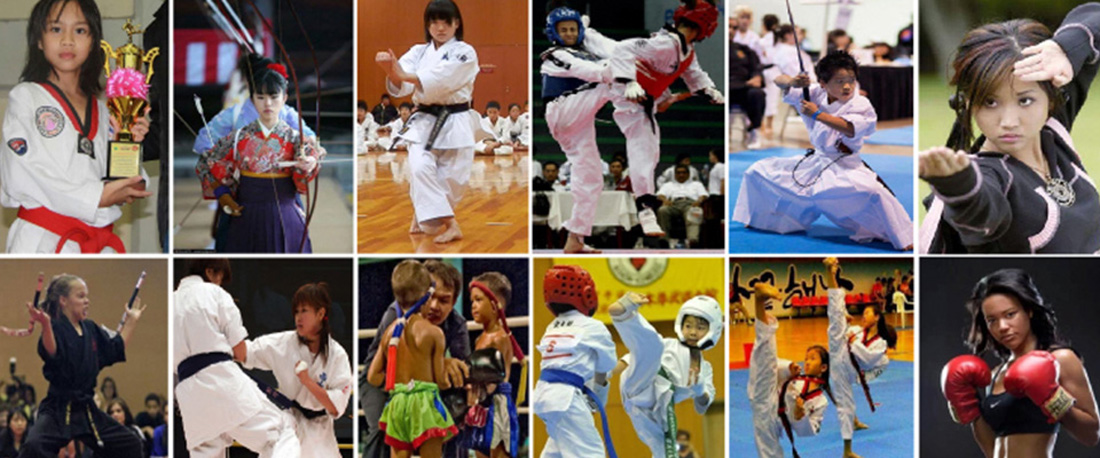
This is the Japanese art of target test cutting, a practice for testing the quality of Japanese swords that continues today, and has evolved into a martial art that focuses on demonstrating skill with a sword. Only the most skilled swordsmen were chosen to test swords, so this was not a variable in how well the sword cut. The materials used to test swords varied greatly, and included rice straw (wara), the top layer of tatami mats (goza), bamboo, and thin steel sheets. In addition, a wide variety of cuts were used on cadavers and occasionally convicted criminals, which included the ankle cut (tabi-gata) and the diagonal cut from shoulder to opposite hip (O-kesa). The names of the types of cuts on cadavers show exactly where on the body the cut was made, and older swords can still be found today that have inscriptions such as, ‘Five bodies with hip cut (Ryu Gurumat)’. Such inscriptions, known as a cutting signature (tameshi-mei or saidan-mei), would add greatly to the value of a sword, compensating the owner for the large sums of money typically charged for the test. Aside from specific cuts made on cadavers, there were the normal cuts of Japanese swordsmanship that included downward diagonal (Kesa-giri), upward diagonal (Kiri-age or Gyaku-kesa), horizontal (Yoko or Tsuihei), and straight downward (Jodan-giri, Happonme, Makko-giri, Shinchoku-giri or Dottan-giri). In modern times, the practice of tameshigiri has come to focus on testing the abilities of the swordsman, rather than that of the sword. Practitioners of tameshigiri sometimes use the terms Shito (sword testing) and Shizan (test cutting to distinguish between the historical practice of testing swords and the contemporary practice of testing the cutting ability of a person. The target most often used is the tatami rush mat. To be able to cut consecutive times on one target, or to cut multiple targets while moving, requires very great skill.
Targets today are typically made from wara or goza, either bundled or rolled into a tubular shape. They may be soaked in water to add density to the material. This density is to approximate that of flesh, whilst green bamboo is used to approximate bone. Once the goza target is in this tubular shape, it has a vertical grain pattern when stood vertically on a target stand, or horizontally when placed on a horizontal target stand (dotton or dodan), and this direction of the grain affects the difficulty of the cut. The difficulty of cuts is a combination of the target material hardness, the direction of the grain of the target, the quality of the sword, the angle of the blade (hasuji) on impact, and the angle of the swing of the sword (tachisuji). When cutting a straw target that is standing vertically, the easiest cut is the downward diagonal, due to a combination of the angle of impact of the cut against the grain, the downward diagonal angle of the swing, and the ability to use many of the major muscle groups and rotation of the body to aid in the cut. The next difficult is the upward diagonal cut which has the same angle, but works against gravity and uses slightly different muscles and rotation. The third most difficult is the straight downward cut, not in terms of the grain but in terms of the group of muscles involved, and the most difficult cut of these four basic cuts is the horizontal direction (against a vertical target), which is directly perpendicular to the grain of the target.
Muay Thai
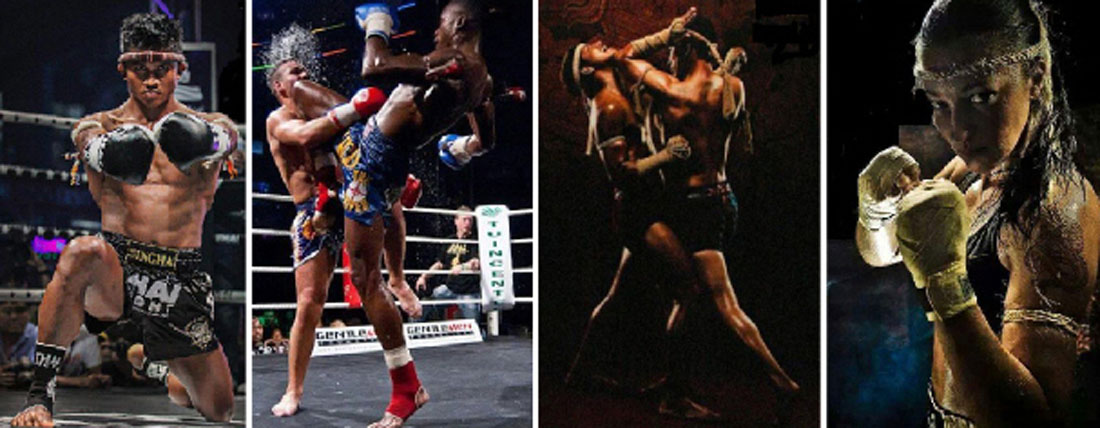
Muay Thai, was originally called by more generic names such as Toi muay or simply muay, and as well as being a practical fighting technique for use in actual warfare, muay became a sport in which opponents fought in front of spectators for entertainment. These muay contests gradually became an integral part of local festivals and celebrations, especially those held at temples, and eventually the previously bare-fisted fighters started wearing lengths of hemp rope around their hands and forearms. This type of match was called ‘muay khat chueak’, and kickboxing was a component of military training that gained prominence during the reign of King Naresuan in 1560 CE. Muay Thai is referred to as the ‘Art of Eight Limbs’ or the ‘Science of Eight Limbs’ because it makes use of punches, kicks, elbows, and knee strikes, therefore, using eight points of contact as opposed to two (fists) in boxing, and four (hands and feet) used in other more regulated combat sports such as kickboxing.
Taekwondo

Taekwondo is a Korean martial art combining combat and self-defence techniques with sport and exercise, and was developed by a variety of Korean masters during the 1940s. The name taekwondo was coined by Choi Hong Hi, but it is claimed taekwondo development was a collaborative effort by a council consisting of members from the nine original kwans. Traditional taekwondo refers to the martial art as it was established in the 1950s and 1960s in the South Korean military, and in various civilian organizations including schools and universities. Sport taekwondo was developed in the 1950s and has a different focus, especially in terms of its emphasis on speed and competition. It is subdivided into two main styles, one of which is practiced by the International Taekwondo Federation created in 1955 by Choi Hong Hi, and the other that derived from Kukkiwon, the headquarters of the World Taekwondo Federation founded in 1973 by Dr. Kim Un Yong. Although there are doctrinal and technical differences between sparring in the two main styles, and among the various organizations, the art in general emphasizes kicks and punches thrown from a mobile stance. Taekwondo training generally includes a system of blocks, kicks, punches, and open-handed strikes, and may include various take-downs or sweeps, throws, and joint locks. Pressure points, known as jiapsul’ are used, as well as grappling self-defense techniques borrowed from other martial arts such as Japanes judo, Korean hapkido, and Korean wrestling.
Freestyle

Freestyle semi-contact is a fighting discipline where two opponents engage with the primary goal of scoring greater points using controlled legal techniques with speed and focus. The main characteristics of freestyle semi-contact are delivery, technique and speed, and the competition in this discipline should be executed in its true sense with light and well-controlled contact. It is a technical discipline with equal emphasis put on hand and foot techniques from an athletic viewpoint, where techniques (punches and kicks) are strictly controlled, and points are awarded for techniques involving permitted strikes to specific targets on the body.
Kickboxing

Kickboxing is a group of stand-up combat sports based on kicking and punching, historically developed from karate, Muay Thai and Western boxing, and is practiced for self-defence, general fitness, or as a contact sport. Japanese kickboxing originated in the 1960s and competitions have been held since then, and American kickboxing originated in the early 1970s. Historically, kickboxing can be considered a hybrid martial art formed from the combination of elements of various traditional styles.
Capoeira

Capoeira is a Brazilian martial art that combines elements of dance, acrobatics, and music. It was developed in Brazil, mainly by African descendants, as a kind of dance in which participants use their feet to kick the head of their opponent. It is known by quick and complex moves, using mainly power, speed, and leverage for a wide variety of kicks, spins, and highly mobile techniques. Capoeira used in genuine self-defense situations incorporates many sweeps and low moves, whereas when played as a game there is more emphasis on high moves, demonstrations of acrobatics, full cartwheels for evasion, and flips or other exotic techniques performed nearly always to traditional Brazilian berimbau music as entertainment for audiences. There is evidence to suggest the word capoeira originated in Angola where the word ‘kapwera’ is the Bantu verb meaning to fight. It was practiced by slaves and disguised as a dance in order to prevent punishment or execution for learning how to fight and defend themselves, which was forbidden to those who were legally defined as property.
Shorinji Kempo

Shorinji Kempo is an esoteric Japanese martial art considered as the modified version of Shaolin Quanfa, and was established in 1947 by Doshin So,, a Japanese martial artist and former military intelligence agent. It is a system of self-defence training, mental training, and promotion of health, the methods of which are based on the concept that spirit and body are not separable, and it is integral to train both body and spirit. Through employing a well organized technical training schedule, Shorinji Kempo claims to help practitioners establish themselves, promote mutual comfort, and the philosophy and techniques of the art are outlined in a handbook called Shorinji-kempo-kyohan.
Mixed Martial Arts

Mixed Martial Arts (MMA) is a full-contact combat sport that allows the use of both striking and grappling techniques, both standing and on the ground, from a variety of other combat sports and martial arts. Various mixed-style contests took place throughout Europe, Japan, and the Pacific Rim during the early 1900s, and in 1980 the first regulated MMA league was created in the United States named Super Fighters, and sanctioned ten tournaments in Pennsylvania but in 1983 the sport was prohibited. The combat sport of vale tudo that had developed in Brazil from the 1920s was brought to the United States by the Gracie family in 1993 with the founding of the Ultimate Fighting Championship (UFC).

The more dangerous vale-tudo-style bouts of the early UFCs were made safer with the implementation of additional rules, leading to the popular regulated form of MMA seen today. Originally promoted as a competition with the intention of finding the most effective martial arts for real unarmed combat situations, competitors were pitted against each another with few rules. Later, fighters incorporated multiple martial arts into their style, whilst promoters adopted additional rules aimed at increasing safety for competitors, and to promote mainstream acceptance of the sport. The first documented use of the name Mixed Martial Arts was in a review by television critic Howard Resenberg in 1993, and the term gained popularity when one of the largest websites covered the sport, hosted, and reprinted the article. Following changes, the sport has seen increased popularity on television channels a business that rivals boxing and professional wrestling.
Boxing

Boxing is a combat sport in which two people engage in a contest of strength, speed, reflexes, endurance, and will, by throwing punches with gloved hands against each other. Amateur boxing is a common fixture in most international games, and it also has its own World Championships. Boxing is supervised by a referee over a series of rounds, and the result is decided when an opponent is deemed incapable to continue by a referee, is disqualified for breaking a rule, resigns by throwing in a towel, or is pronounced the winner or loser based on the judges’ scorecards at the end of the contest. Whilst people have fought in hand-to-hand combat since before the dawn of history, the origin of boxing as an organized sport may have been its acceptance by the ancient Greeks in 688 BCE. It evolved from 16th and 18th century prize-fighting, largely in Great Britain, to the forerunner of modern boxing in the 19th century, again initially in Great Britain and later in the United States.
Ninjutsu
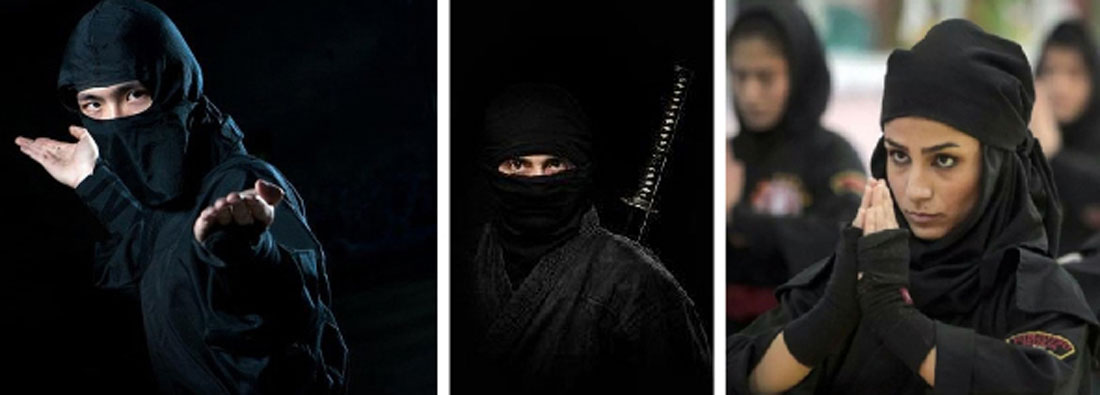
Ninjutsu is the martial art, strategy, and tactics of unconventional and guerrilla warfare, as well as the art of espionage purportedly practiced by the ‘shinobi’, commonly known outside of Japan as ninja. Ninjutsu was more an art of tricks, than a martial art, and was a separate discipline in some traditional Japanese schools, which integrated study of more conventional martial arts along with shurikenjutsu, kenjutsu, sojutsu, bojutsu, battlefield grappling kumi-uchi, an old form of jujutsu, and others. Whilst there are several styles of modern ninjitsu, the historical lineage of these is disputed, and some schools and masters claim to be the only legitimate heir of the art, but ninjutsu is not centralized like modernized martial arts such as judo or karate. Togakure-ryu claims to be the oldest recorded form of ninjutsu, and to have survived since the 16th century.
Yoga

The science of Yoga has its origins thousands of years ago, long before the advent of the first religion or belief system. According to Yogic lore, Shiva is seen as the first yogi or Adiyogi and the first guru or Adiguru. Thousand years ago, on the banks of Lake Kantisarovar in the Himalayas, Adiyogi poured profound knowledge into the legendary Saptarishis or ’seven sages’. These carried this powerful Yogic science to different parts of the world including Asia, the Middle East, North Africa, and South America, and it is interesting modern scholars have noted and marvelled at the close parallels found between ancient cultures in many parts of the world. However, it was in India that the Yogic system found its fullest expression, and Agastya, the Saptarishi who travelled across the Indian sub-continent, crafted this culture around a core Yogic way of life.
Yoga is widely considered as an ‘immortal culture outcome’ of the Indus Saraswati Valley Civilization dating back to 2700 BC, and has proven itself to cater to both the material and spiritual uplift of humanity. A number of seals and fossil remains from the Indus Saraswati Valley Civilization with Yogic motifs and figures performing Yoga sadhana, suggest the presence of Yoga in ancient India, and the seals and idols of a mother Goddess are suggestive of Tantra Yoga. The presence of Yoga is also found in folk traditions, Vedic and Upanishad heritage, Buddhist and Jain traditions, Darshanas, epics of Mahabharata including Bhagavad-Gita and Ramayana, theistic traditions of Shaivas, Vaishnavas, and Tantric traditions. Though Yoga was practiced in the pre-Vedic period, the great sage Maharishi Patanjali systematized and codified the then existing Yogic practices, their meaning and related knowledge through Patanjali’s Yoga Sutras. After Patanjali, many sages and Yoga masters contributed greatly to the preservation and development of the field through well documented practices and literature. Yoga has since spread all over the world through the teachings of eminent Yoga masters from ancient times to the present day, and now everybody has conviction about Yoga practices towards the prevention disease, and the maintenance and promotion of health. Thirty million people across the globe now benefit from the practice of Yoga, which is blossoming and growing more vibrant on a daily basis.
International Yoga Day
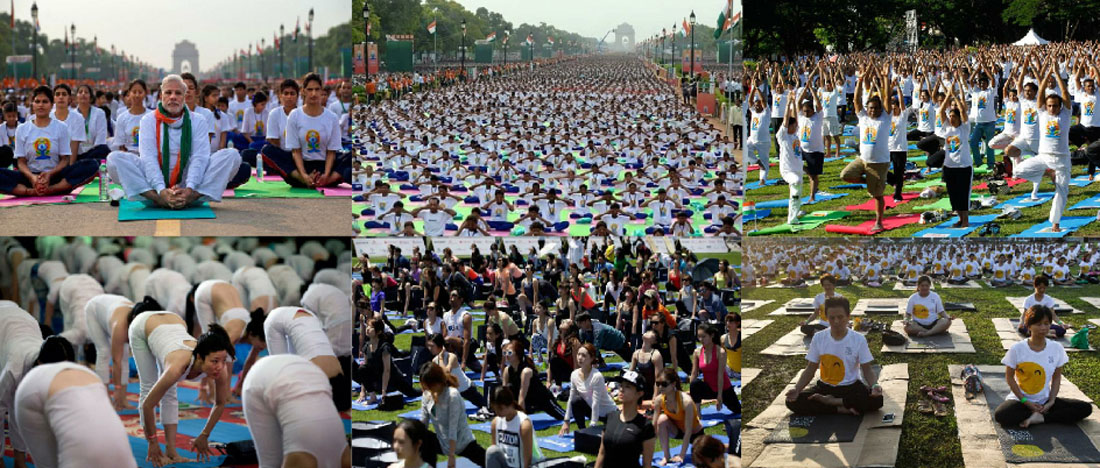
On December 11, 2014 the United Nations General Assembly declared June 21 as the International Day of Yoga. The Indian Prime Minister Narendra Modi in his United Nations Address on 27 September 2014 suggested the International Day of Yoga should be on June 21 as this is the longest day of the year (Summer Solstice) in the Northern Hemisphere, and has special significance in many parts of the world. From the perspective of yoga, the Summer Solstice marks the transition to Dakshinayana, the first full moon after Summer Solstice is known as Guru Poormina, and Lord Shiva, the first yoga practitioner (Adi Yogi) is said to have begun imparting the knowledge of yoga to the rest of mankind on this day, and became the first guru (Adi Guru). Dakshinayana is also considered a time when there is natural support for those pursuing spiritual practices. Yoga is an invaluable gift of India’s 5,000 year old ancient tradition and embodies unity of mind and body, thought and action, restraint and fulfilment, harmony between man and nature, a holistic approach to health and well-being, and allows practitioners to discover the sense of oneness with the self, the world, and the nature.
Martial Arts & Animal Influence


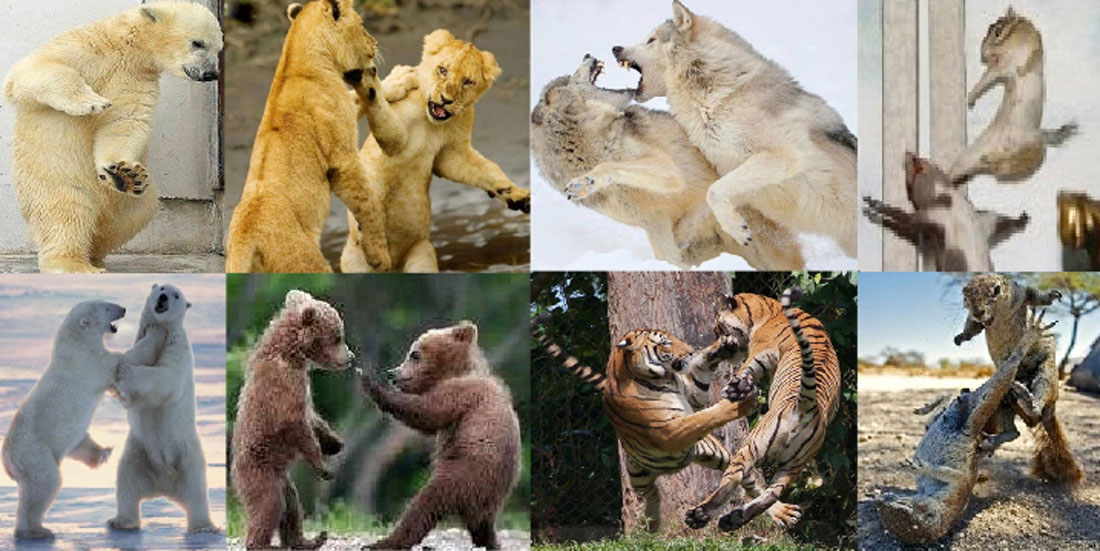
For thousands of years civilisations have had a great affinity with birds and animals that greatly influenced the fighting techniques of martial art systems based on their characteristics and combative methods. Since the beginning of time, humans have been at war, have imitated the fighting spirit of animals in many different ways, and animal influence has been responsible for the formulation of hundreds of health-preserving exercises, combat training methods, and fighting systems. Unlike humans, wild animals are not guided by their emotions but are focused on their own survival and that of their offspring, which ultimately makes them enviable as fighting machines.








